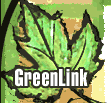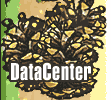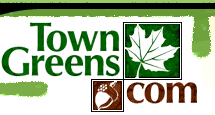The town of Lebanon, clustered around the green, is located on a high plateau. The green, over a mile long and about 400 feet wide and oriented on a north-south axis, is the dominant feature of the town. Land behind the buildings facing it slopes down to the valleys below. With the exception of a grouping of buildings at the southwest corner, they are spaced widely apart around the green. The open pasture behind them is punctuated by barns, sheds and a windmill tower, reflecting the agrarian roots of the community.
The green is mostly level, particularly at the northern end, but slopes gently from east to west. Route 87 splits at the green and provides the boundaries for both sides. The major east-west connector, Route 207, bisects it. The section to the south of 207 is a small triangular greensward upon which is located the modern brick town office building in the Colonial Revival style. The well-maintained lawn is shaded by a number of sugar maple trees and the overall effect is that of a park or the typical 19th-century green. In fact, historically, it has been called "Trumbull Park."
Around it are clustered important institutional buildings including the John Trumbull Library (1969) and the First Congregational Church. This red brick building was designed by John Trumbull and built in 1804-1807. It was severely damaged in the 1938 hurricane and reconstructed according to its original plans under the supervision of J. Frederick Kelly (see National Register Nomination for more details). Two memorials are located on the lawn further contributing to the park-like character. These include a flagpole with a plaque on each of the four elevations of its base memorializing those who fought in the Revolutionary War and the War of 1812 (east); Civil War and Spanish American War (south); and World War One (west). Three soldiers in relief are on the fourth (north) plaque. Another memorial in the northeast corner honors those who fought in World War One and Two.
By far the largest portion of the green is to the north of Route 207. It consists of an open pasture stretching about a mile that is mowed twice a year. The exception is the area behind the church and John Trumbull Library that is kept mowed and used as a ball field and the northern tip of the green where a small grove of diseased conifers is located. This open expanse of meadowland is indeed an exceptional feature, duplicated by no other greens in Connecticut. There are a few scattered trees along the perimeter and a crushed gravel path has recently been added along the eastern boundary.
The buildings surrounding the green date primarily from the 18th and 19th centuries and are further described in the National Register nomination. While some are architecturally distinguished and associated with important personages, for the most part they reflect the agrarian roots of the community and are unremarkable. The streetscape is particularly important because it defines the wide open pasture as a green. Without the buildings ranged around, it would be farmland.






![]()